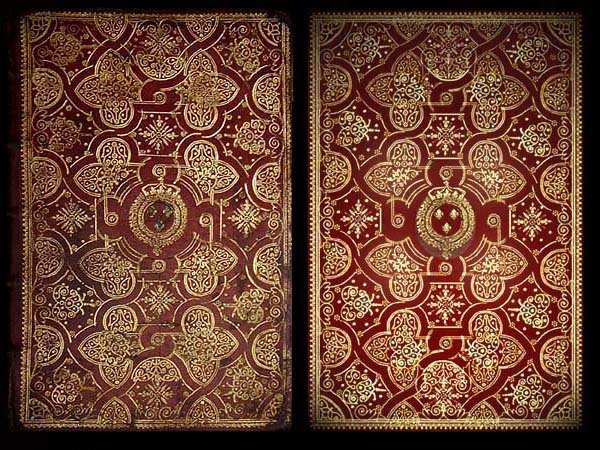

| This Atelier des Caumartin binding, which is possibly one of the last ever produced, seems to have been not as well executed as some of the earlier examples. I decided to tackle a virtual reproduction of this binding, using some of the techniques already employed on the First Stadholder's bindings. |
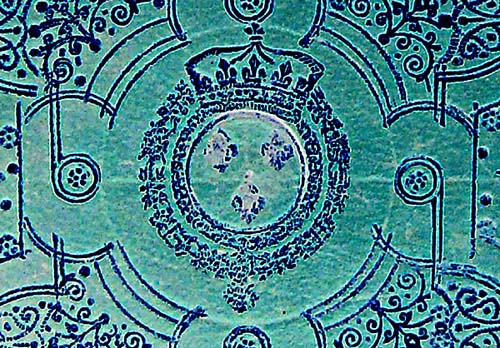
| In this inverted image we can see traces of the original layout. Lines trace the vertical and horizontal midpoints and inscribed circle, this circle fixes the position of the 4 hubs, the hubs are imprints from single tool consisting of a center with tangent radial projections (ac-18-3). |
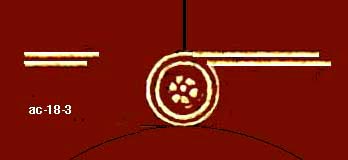
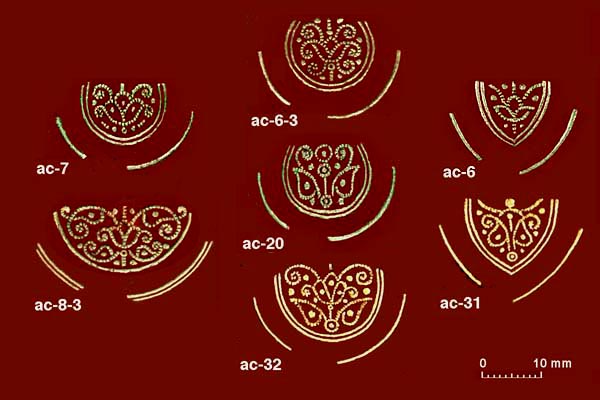
| These tools are made so as to link together to form a ready made strapwork, however as not all books are the same size there is a need to juggle these imprints to make things "fit". I had to do a number of reconstructions before I was able to line up everything so as to make one or two "key" pieces fit in. This is hard enough on a computer where at least you can correct mistakes, the guilder however did not have this advantage, a misplaced imprint, or an imprint out of alignment, which seems by far the more common sort of problem, cannot be changed. Thus one gains a measure of respect for these able craftsman. |
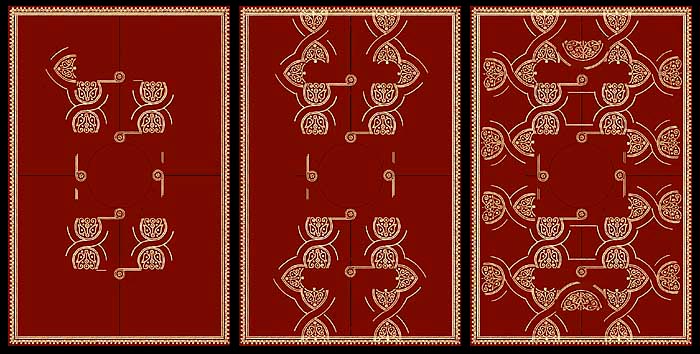
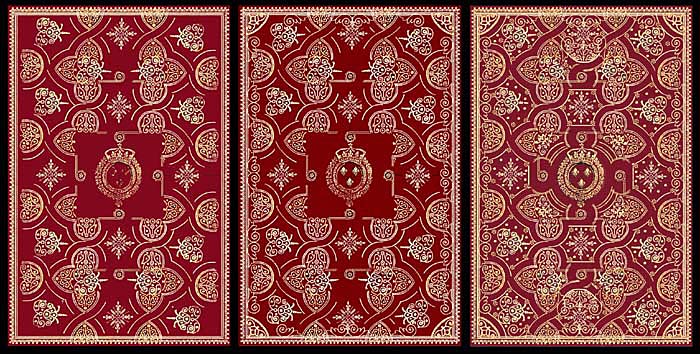
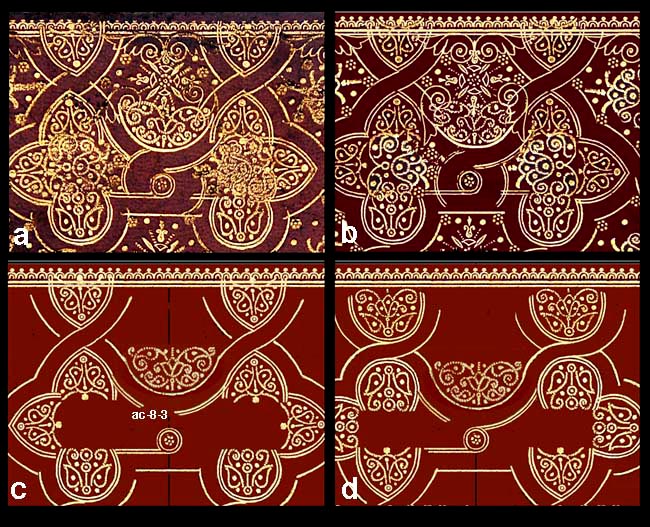
| In Comparative Diagram 2 we see some of the typical problems encountered, in the original work (a) the first immediate evident problem is that the entire strapwork structure is too large to fit the surrounding framework and thus forced to overlap the fillets. In my first reconstruction I followed the original layout including this overlap. The next major problem is placing the linking imprint ac-8-3, not only is the original out of alignment, but it will not fit. The two longitudinal strapworks are too close together... in my reconstruction (b) I fell into the same error, however in c and d, I juggled all the parts until I finally got a fit. One wonders if the two scroll wings ac-13a and ac-13b were used try to mask this problem. This brings me to the issue of whether or not this binding was made in 1715. By a strange stroke of luck I discovered yet another 1715 Office de la semaine sainte by Antoine Dezallier in a Atelier des Caumartin binding. |
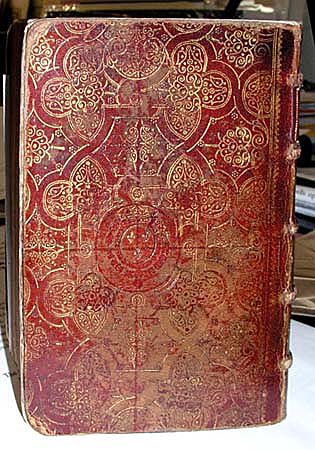
| This book as well as the binding has been cropped terribly, however enough of it remains to allow a complete virtual reconstruction. The first point of note is that with the exception of a change of few imprints, this binding is nearly identical to the binding which I have detailed on the previous page (click here to see it). |
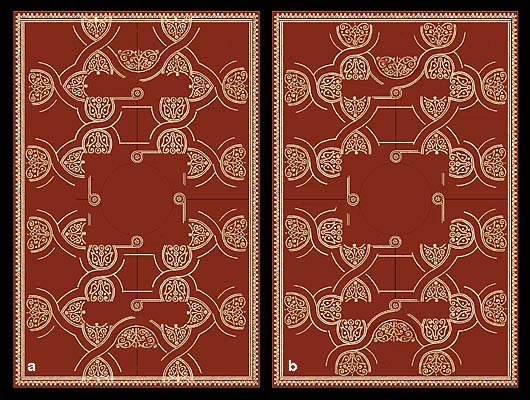
| These two bindings employ a number of tools in an identical fashion, and follow the same layout plan, in fact both bindings still show the initial layout pattern which was traced heavily into the leather... thus I am tempted to think that these two bindings were made by the same person probably sometime not long after the 1715 publication of these books. A close examination of British Library specimens Davis469 and c67e7 shows that they also use the same tools, however Davis469 is a much closer match. On the Davis469 binding we see tools that match both 1715 bindings, what is lacking on one is found on the other, the three bindings are found with identical armes de Louis XIV centrepieces. Below is the finished Virtual Binding click to enlarge. |
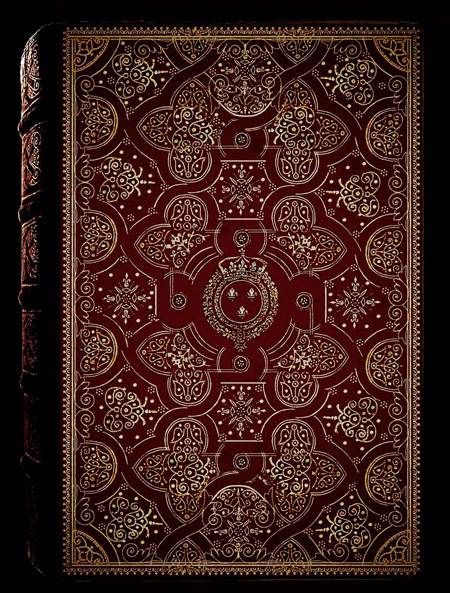
| Go to Digital Alchemy | return to the home page of cyclopaedia.org |